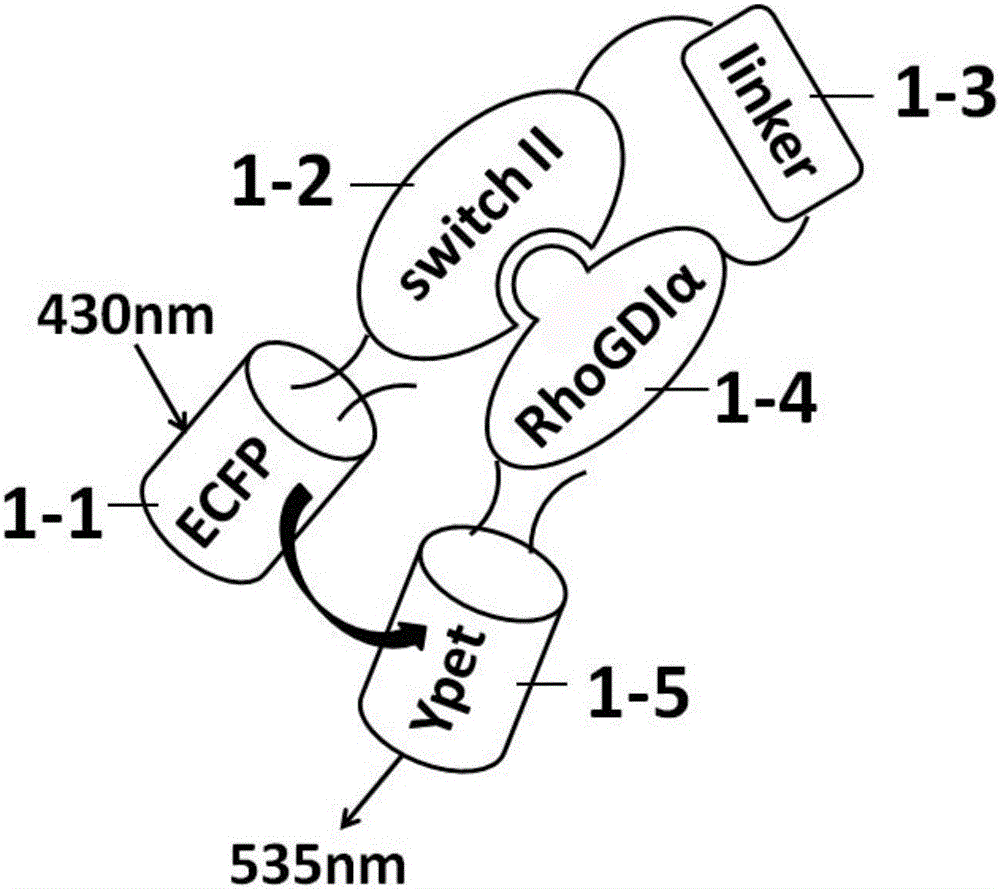Biological probe for detecting activity of RhoGDIalpha (Rho GDP dissociation inhibitor alpha) protein in living cell
A biological probe and living cell technology, applied in the field of cell biology and molecular biology, can solve the problems of high cost, inability to detect high protein activity, destroying the normal physiological state of cells, etc., and achieve the effect of high specificity and low cost
- Summary
- Abstract
- Description
- Claims
- Application Information
AI Technical Summary
Problems solved by technology
Method used
Image
Examples
Embodiment Construction
[0021] The specific implementation manners of the present invention will be further described below in conjunction with the accompanying drawings and technical solutions.
[0022] The probe can be self-expressed in eukaryotic cells, and can accurately reflect changes in RhoGDIα activity and spatial distribution without affecting the cell's own function. The specific implementation method is as follows: the eukaryotic cells are transfected with the fusion plasmid of the RhoGDIα-FRET probe, and the cells automatically express the fusion protein of the RhoGDIα-FRET probe. When the RhoGDIα protein (1-4) on the probe is active, it can combine with the substrate switchII (1-2) on the probe, and the whole probe will be folded to change the spatial structure of the probe. The change of the distance between ECFP(1-1) and Ypet(1-5) will affect the energy transfer efficiency between the two fluorescent proteins. Under the FRET microscope, the living cells transferred to the RhoGDIα-FRET...
PUM
 Login to View More
Login to View More Abstract
Description
Claims
Application Information
 Login to View More
Login to View More - R&D
- Intellectual Property
- Life Sciences
- Materials
- Tech Scout
- Unparalleled Data Quality
- Higher Quality Content
- 60% Fewer Hallucinations
Browse by: Latest US Patents, China's latest patents, Technical Efficacy Thesaurus, Application Domain, Technology Topic, Popular Technical Reports.
© 2025 PatSnap. All rights reserved.Legal|Privacy policy|Modern Slavery Act Transparency Statement|Sitemap|About US| Contact US: help@patsnap.com


